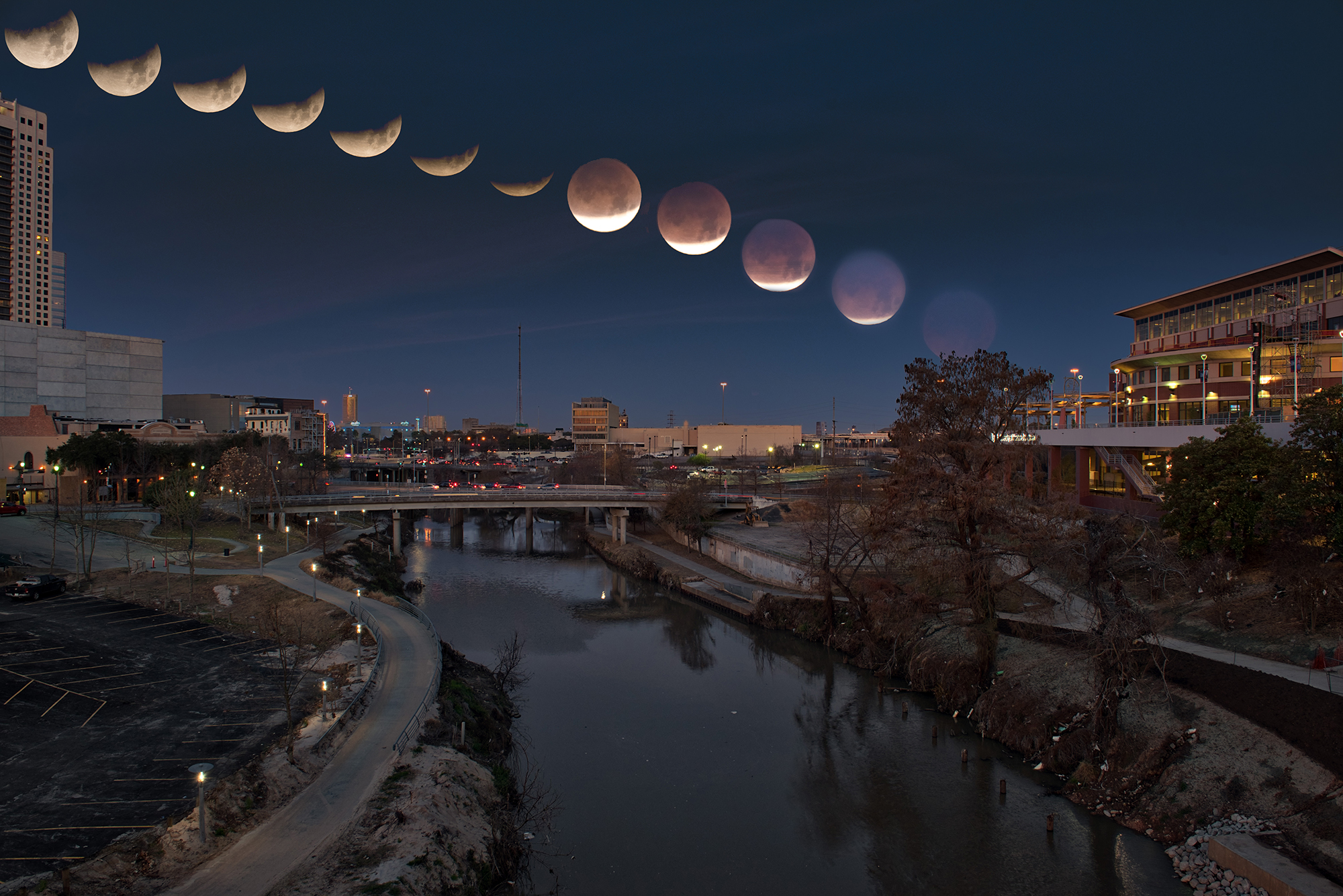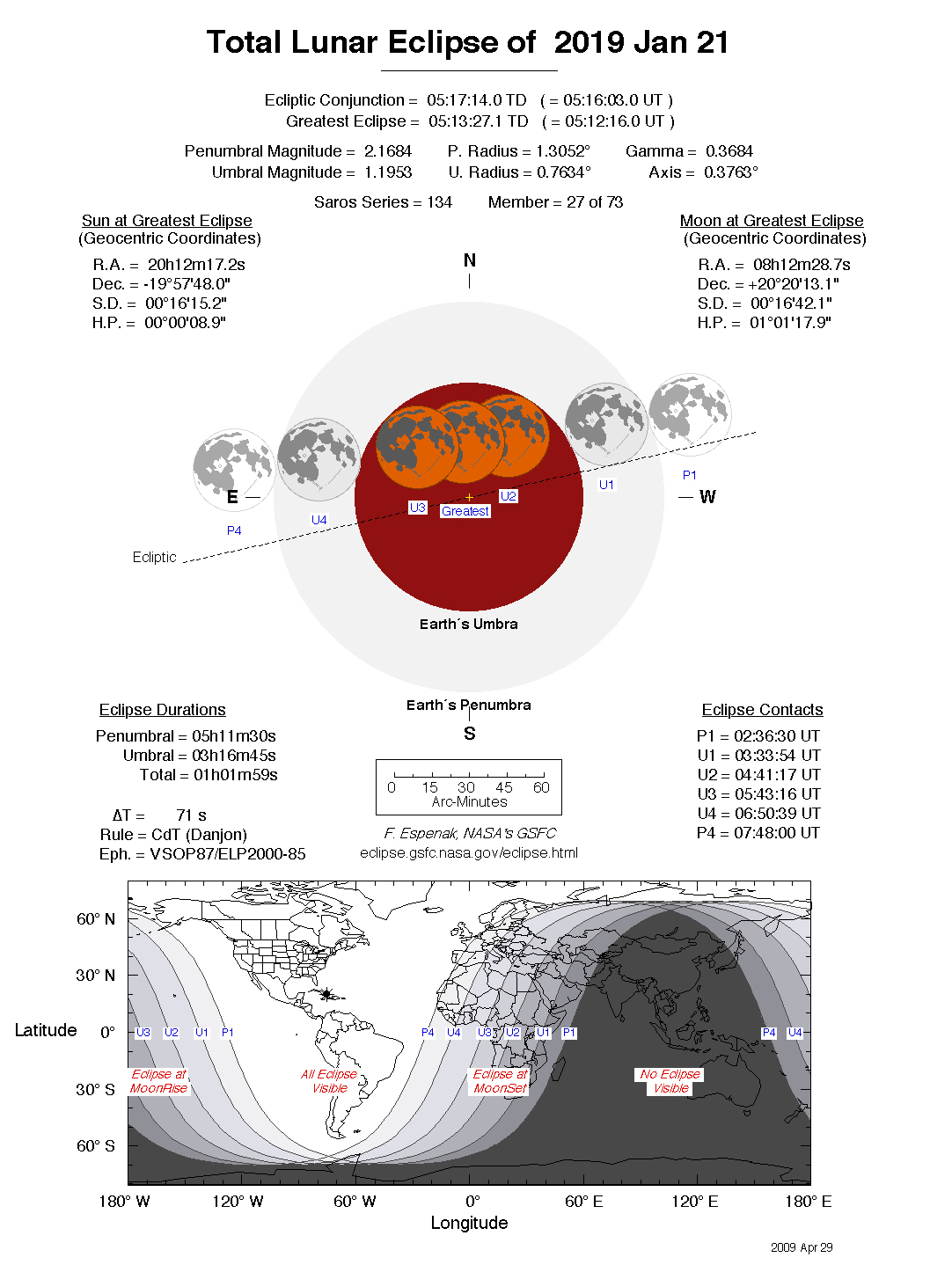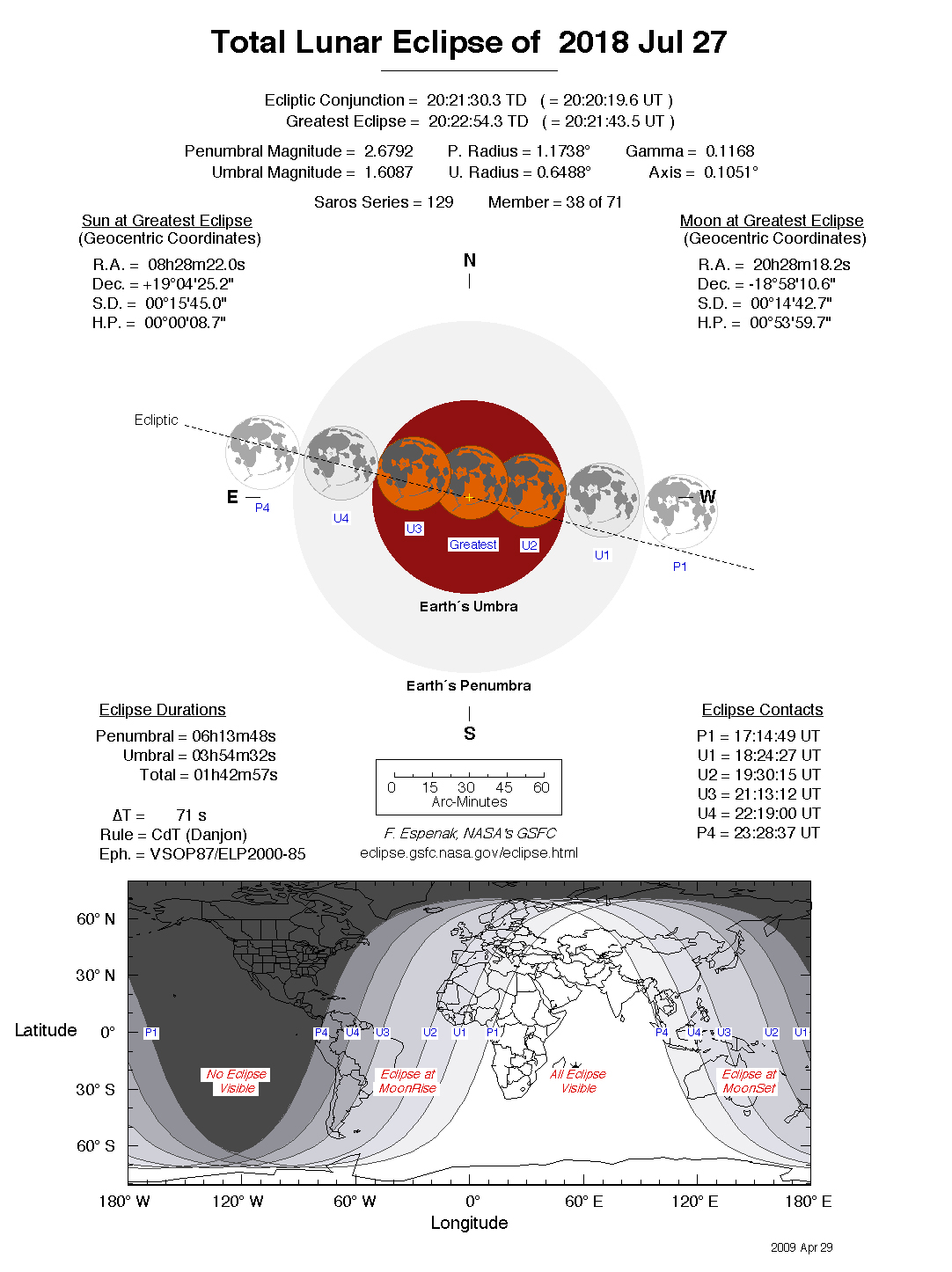When Is the Next Super Blue Blood Moon Again
Missed the Blood Moon Lunar Eclipse? Here's When the Next One Is Happening
Skywatchers around the world were treated to a rare Super Blue Blood Moon today (Jan. 31). While this was the get-go time in over 150 years that this detail type of eclipse has happened in the U.S., Americans tin can await forward to another "blood moon" eclipse coming on January. 21, 2019.
This next immediate total lunar eclipse — when the moon appears to turn red as it passes through Earth's dark inner shadow, or the umbra — will occur later this twelvemonth on July 27. Simply that eclipse won't be visible from Due north America. Nonetheless, much of the rest of the world — South America, Europe, Africa, Asia and Commonwealth of australia — volition have a great view of that eclipse.
The Jan. 21, 2022 eclipse, withal, will be visible from all of North and South America, weather permitting. Observers in some parts of Europe, Africa and Asia volition also be able to see at to the lowest degree some portion of this eclipse. [In Photos: The Rare Super Blue Blood Moon Eclipse of 2018]

While today'south Super Blue Blood Moon eclipse was best viewed from the West Declension (because, further eastward, the moon was below the horizon for much of the eclipse), the 2022 one volition exist visible in its entirety from coast to coast.
The lunar eclipse on Jan. 21, 2019, as well happens to exist a so-called supermoon. This means that the moon will exist at perigee, or the point in its elliptical orbit at which information technology is closest to Earth.

During a supermoon, which tin happen simply when the moon is full, the moon appears slightly larger and brighter than usual. Still, the deviation is hardly noticeable to coincidental stargazers.
One difference between today'southward eclipse and the one happening adjacent year is that the side by side i will not be a Blue Moon. Astronomers take ii different definitions for Bluish Moons: They can be the second full moon in one month or the third full moon in a season that has iv full moons. The adjacent time that will happen is on March 31.

After the Jan. 21, 2022 total lunar eclipse, stargazers will have to wait more than two years for the next one. The twelvemonth 2022 will run across one more than lunar eclipse, a partial eclipse on July 16 of that yr, and will exist followed by iv relatively minor penumbral eclipses (where the moon passes through the outer edge of the Earth's shadow, called the penumbra) in 2020. After that, the side by side total lunar eclipse will exist May 26. 2021.
Nosotros'll accept to wait another decade before the next Blue Blood Moon, which will happen on December. 31, 2028. (Just when we thought that there couldn't perhaps be more adjectives in forepart of the give-and-take "moon," now we accept the New year's Eve Blueish Claret Moon to wait forward to!) That lunar eclipse will exist visible over all of Asia and much of Europe, Africa, Australia and North America.
The next Super Blue Blood Moon won't happen until Jan. 31, 2037, and information technology will be visible in Northward America, Europe, Asia, Australia and parts of Africa.
Solar eclipses, too!
Eclipses of the lunar variety are certainly not the merely eclipses we have to look forrard to this year. We're but two weeks abroad from the side by side solar eclipse and the commencement solar eclipse of 2018.
On Feb. 15, the moon will partially block the sun over Antarctica and part of Due south America. And then on July 13, another partial solar eclipse will exist visible south of Australia. The third solar eclipse of the year will too exist only a fractional eclipse, and it tin exist seen from northern Europe, northern Asia and parts of eastern Asia.
Editor'due south note:If yous captured an astonishing photo or video of the total lunar eclipse and would like to share information technology with Space.com for a story or gallery, send images and comments to spacephotos@space.com.
E-mail Hanneke Weitering at hweitering@space.com or follow her @hannekescience . Follow usa @Spacedotcom , Facebook and Google+ . Original article on Space.com .
Bring together our Space Forums to continue talking space on the latest missions, nighttime sky and more than! And if you have a news tip, correction or annotate, let us know at: community@space.com.
Source: https://www.space.com/39557-next-blood-moon-eclipses-2018-2019.html

0 Response to "When Is the Next Super Blue Blood Moon Again"
Enregistrer un commentaire